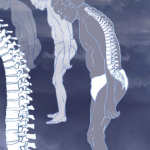 ATLANTA—The COAST-X (NCT02757352) study evaluated the efficacy and safety of ixekizumab in patients with non-radiographic axial spondyloarthritis (axSpA). In November, the primary results of this 52-week, randomized, double-blind, placebo-controlled, phase 3 study were presented at the 2019 ACR/ARP Annual Meeting.1
ATLANTA—The COAST-X (NCT02757352) study evaluated the efficacy and safety of ixekizumab in patients with non-radiographic axial spondyloarthritis (axSpA). In November, the primary results of this 52-week, randomized, double-blind, placebo-controlled, phase 3 study were presented at the 2019 ACR/ARP Annual Meeting.1
To participate, patients (n=303) with non-radiographic axSpA had to meet the Assessment of Spondyloarthritis International Society (ASAS) criteria, with a Bath Ankylosing Spondylitis Disease Activity Index (BASDAI) and total back pain scores of greater than 4 at baseline. Patients also had to have objective signs of inflammation with the presence of sacroiliitis on MRI or elevated CRP levels of more than 5 mg/L, as well as an intolerance or lack of response to non-steroidal anti-inflammatory drugs (NSAIDs).
Patients received either 80 mg of ixekizumab every four weeks, 80 mg of ixekizumab every two weeks or placebo for up to Week 52. After Week 16, background medication changes or escape to open-label ixekizumab administered every two weeks was allowed at the investigators’ discretion. Conventional background medications included NSAIDs, csDMARDs, analgesics and low-dose corticosteroids. These patients were considered nonresponsive to the treatment.
The study’s primary endpoint was an improvement in the signs and symptoms of non-radiographic axSpA measured by the ASAS40 at Weeks 16 and 52. Secondary endpoints included the improvement in Ankylosing Spondylitis Disease Activity Score (ASDAS), significant improvement in BASDAI scores and the proportion of patients who achieved low disease activity (an ASDAS less than 2.1). Other secondary end points were a significant improvement in sacroiliac joint inflammation as assessed by MRI at Week 16 and a significant improvement in the 36-Item Short Form Health Survey (SF-36) Physical Component Summary (PCS) score at both Weeks 16 and 52.
The Results
All primary and major secondary endpoints were met during the study. The first statistically significant improvements in ASAS40 rates were seen for both ixekizumab-treated regimen patients as early as Week 1. At Weeks 16 and 52, ASAS40 responses in ixekizumab-treated patients were clinically and statistically significant compared with placebo-treated patients (P<0.01). At Week 52, 30% of patients who received 80 mg of ixekizumab every four weeks achieved an ASAS40 response. Additionally, 31% of patients who received 80 mg of ixekizumab every two weeks achieved an ASAS40 response. Only 13% of placebo-treated patients achieved an ASAS40 response.
From baseline to Week 16, the PCS score significantly differed between placebo-treated patients and ixekizumab-treated patients. This finding was evident as early as Week 4 and maintained through Week 52. Patients on both ixekizumab treatment regimens had significantly greater changes from baseline in disease activity, functional status, and sacroiliac joint, Spondyloarthritis Research Consortium of Canada scores compared with placebo-treated patients at Weeks 16 and 52.


